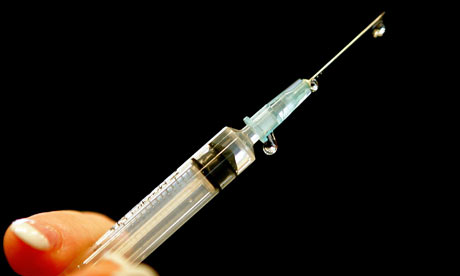Most companies in Britain have not been affected by the outbreak of
swine flu, research has found, confounding fears that the virus could derail the country's fledgling economic recovery.
But the survey of 450 companies by the British Chambers of Commerce (BCC) found that fewer than half of firms had contingency plans in place to cope if the swine
flu outbreak gets worse, despite warnings of a second wave in the autumn.
The report, the first of its kind, said 83.7% of businesses had not been affected by the spread of swine flu and only a third believed the disease could threaten the UK's recovery from
recession.
As a result, many have failed to draw up contingency plans for dealing with large numbers of workers taking time off if they contract the H1N1 virus.
There had been fears that businesses, shops and distribution centres could be forced to shut if the virus spread rapidly. Airlines and other transport services could also be disrupted.
The BCC's findings refute claims that workers are using the virus as an excuse to take sick days. Anecdotal evidence shows employers are more likely to tell staff to stay away if they have symptoms.
The TUC general secretary, Brendan Barber, said: "This shows that, contrary to what some have been claiming, workers are not using swine flu as an excuse to take time off work."
He called on employers not to become complacent about the threat to their staff simply because infection levels had declined in recent weeks. The government's chief medical officer, Sir Liam Donaldson, has repeatedly warned of a second wave of swine flu in the autumn.
Barber said: "Employers should be using this time to work with their staff to ensure they have contingency plans in place to deal with any possible resurgence of the virus in the autumn."
A BCC spokesman said: "We haven't seen any evidence of employees skiving en masse because of swine flu." But he said the government needed to exercise caution in its plans to allow employees infected with swine flu to stay off work for 14 days without a doctor's note, rather than seven days.
GPs have been seeing a high number of patients at the start of the week and Donaldson said the National Pandemic Flu Service for England received most calls from patients on Mondays.
But he shrugged off the idea that workers were faking sickness: "I think people traditionally hold on to their illnesses over the weekend, then see their GP on Monday."
As schools reopen, health authorities are bracing themselves for another rise in swine flu. The UK and the US governments say they will not close schools except under exceptional circumstances after experts claimed closures did not reduce the number of cases, but spread them over a longer period.



